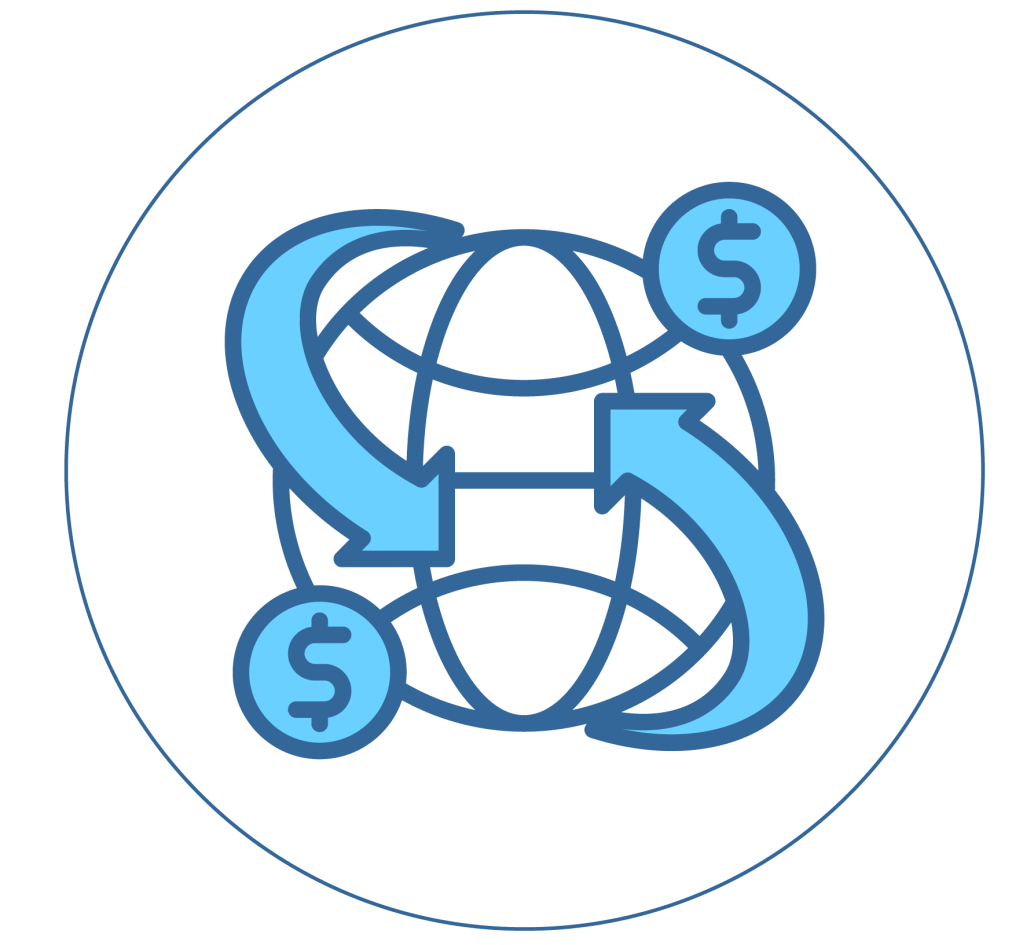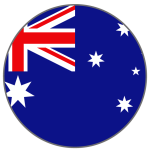Highlights:

Announcements on Aug. 1 raised the United States’ tariff rates toward the upper end of expected range of 10% to 15%, but CUSMA compliant trade exemptions continue to limit the impact on Canadian products.

We still expect further but modest deterioration in the Canadian labour market. This outlook combined with rising fiscal stimulus is why we think the Bank of Canada will maintain its current policy stance.

The U.S. Federal Reserve will wait longer to cut rates from restrictive levels, once slack in the labour market grows sufficiently large to override inflation concerns. We think that will be in December.

Issue in focus: U.S. tariffs implemented this year were meant to be paid by foreign exporters, recharge U.S. manufacturing, and narrow the size of U.S. trade and fiscal deficits. Early data suggests tariffs have not been fruitful at achieving those goals, and we expect they will start to be scaled back as the net cost to the U.S. economy starts to show up more meaningfully.
Forecast changes:
Another month of substantial trade related news from the U.S. didn’t move the needle on our forecasts. The August 1 announcement of higher reciprocal tariffs on countries that hadn’t reached a trade deal with the U.S. pushed the average effective U.S. tariff close to the upper limit of our expected 10% to 15% range, after accounting for collection delays and shifts in trade flows this year.
The blanket International Emergency Economic Powers Act (IEEPA) tariff on Canada was raised from 25% to 35% but continues to impact a small share of exports that are not compliant with the CUSMA free trade agreement. Other sector specific tariffs including on steel and aluminum products remain, but we continue to point to CUSMA exemptions as the most important backstop for North American trade relations, allowing more than 90% of Canadian exports to access the U.S. market duty free. Our Canadian outlook is, therefore, broadly unchanged.
We still expect U.S. tariffs are severe enough to slow U.S. growth. Job growth has already decelerated—including in the trade-sensitive manufacturing sector that was meant to benefit from tariffs. That’s raising the odds of an interest rate cut from the Federal Reserve earlier than our base case forecast that assumes December. Still, the historically low unemployment rate and limited layoffs are more consistent with gradual softening in the labour market than the beginning of a recession.
We hold the expectation for a first rate cut from the Fed in December, once labour market deterioration becomes clear and large enough to override concerns about inflation. Softening in the U.S. economy should also suggest current tariffs are too severe to be sustained, with little offsetting benefits – tariffs thus far have failed to accomplish the main goals they were set to achieve (see more in issue in focus below).
A more detailed breakdown of our forecast:
-
Real GDP growth in Canada and the U.S. are still expected to soften in the second half of 2025 from the 1.1% to 1.2% annualized average in the first half to 0.7% to 0.8%.
-
Labour market conditions are bottoming out in Canada, but will continue to worsen in the U.S. We think the unemployment rate should settle near 7% in Canada, close to the 6.9% in July as the bulk of the tariff-induced pain could already be inflicted. We expect it to continue to rise towards 4 ½ % in the U.S. this year.
-
A rising unemployment rate in the U.S. will prompt the Fed to restart its easing cycle in December. With core inflation elevated,policymakers will start acting once they see a persistent and substantial rise in the unemployment rate, likely in December.
-
The Bank of Canada’s policy rate remains in an appropriate position. The existing, but not growing, slack in Canada’s labour market are balancing moderately elevated core inflation readings, keeping the BoC on the sidelines in the near-term. Beyond that, rising fiscal support should reduce the need for rate cuts.
-
Inflation will show more tariff impact. We expect tariffs, which have been delayed in their impact due to businesses drawing down inventories accumulated earlier this year, will increasingly appear in consumer prices. Core inflation should continue climbing towards 3 ½ % in the U.S., and a lower 3% in Canada (given limited counter-tariffs) by the end of 2025.
Central bank
current policy rate
(latest move)
next move

BoC
2.75%
0 bps in Jul/25
0 bps
Sep/25
The BoC held the overnight rate steady for a third consecutive meeting in July, citing economic resilience, “evidence of underlying inflation pressures,” and heightened uncertainty about U.S. tariffs. With the overnight rate positioned at the midpoint of the neutral range, risks to inflation moderately balanced, and fiscal support stepping up, we expect the BoC to remain on hold for the foreseeable future.

Fed
4.25-4.50%
0 bps in Jul/25
0 bps
Sep/25
After remaining in “wait and see” mode for several meetings, the latest non-farm payrolls’ downward revisions revived prospects of Fed rate cuts in the fall. Nonetheless, underlying details showed a steady unemployment rate and subdued layoffs. With core inflation accelerating, we think it will take additional slack in the labour market to prompt a Fed rate cut and expect that to be later in December.

BoE
4.00%
-25 bps in Aug/25
0 bps
Sep/25
The Bank of England Monetary Policy Committee voted 5-4 in favour of cutting the Bank Rate by 25 basis points in August. An easing bias was maintained, although both the vote split and the meeting minutes were more hawkish than expected. Concerns about slowing momentum in easing underlying inflation pressures were raised. We continue to expect the BoE will only cut once more in November for a terminal of 3.75%.

ECB
2.00%
0 bps in Jul/25
0 bps
Sep/25
The European Central Bank held the deposit rate at 2% in July, but surprised with a more hawkish press conference than expected. President Christine Lagarde emphasized recent improvements in domestic demand, dismissed the risk of inflation undershooting, and reiterated the guidance that the ECB is “in a good place.” We expect the deposit rate will be maintained at 2% going forward.

RBA
3.60%
-25 bps in Aug/25
-25 bps
Sep/25
The Reserve Bank of Australia lowered the cash rate to 3.6% as widely expected, that’s within the range of model-cased estimates of neutral. The accompanying statement hinted at increasing confidence in underlying inflation moving to mid-point target. Coupled with persistent strength in the labour market, we expect modest further cuts in the cash rate, in November and Q1 2026 for a terminal of 3.1%.
Issue in focus: Are U.S. tariffs accomplishing their goals?
The trade war remains in its early stages, with U.S. tariff revenues trailing behind announcements into the summer. Nevertheless, import tariffs collected as a share of U.S. imports have already risen to their highest level since the 1940s.
Importantly, U.S. tariffs this year were established with four key objectives:
1. Make foreign exporters pay.
2. Narrow the U.S. trade deficit.
3. Revitalize U.S. manufacturing.
4. Reduce the U.S. government deficit.
While it’s still early, evidence so far is consistent with the view that tariffs are unlikely to accomplish these goals. That, coupled with slowing U.S. growth, underpins our expectation that current tariff rates are unsustainable and will start to be reduced as we approach 2026.
U.S. buyers, not foreign exporters, are paying the tariffs
Similar to what happened during the first Trump administration, once again we are seeing that U.S. buyers have absorbed the majority of increased U.S. tariff costs this year.
Of course, mechanically, U.S. importers always pay import tariffs. But foreign exporters to the U.S. can effectively share part of this cost by reducing the sticker prices they charge to U.S. buyers.
However, this hasn’t been the case so far. The clearest indicator is the U.S. import price index (which excludes custom duties) has persistently increased this year when petroleum is excluded. This indicates U.S. buyers are continuing to pay higher prices, and there has been minimal tariff-sharing from foreign sellers.
Consumer price data suggests to-date, those tariff costs have not been passed along to households but that leaves U.S. businesses to absorb the costs, putting jobs at risk.
Isolated examples of price concessions exist ─ import prices for household goods including furniture have declined over 3% year-to-date. But, these reductions remain modest compared to the average U.S. tariff of 10% to 15%, or even higher rates imposed on some countries. China, for example, faces a ~30% increase in effective U.S. tariff rate since January, but has seen just a 2% decline in import price index.
Tariffs are not revitalizing U.S. manufacturing
The U.S. manufacturing sector has struggled for much of the past decade. And there is little evidence that tariffs this year have turned things around.
Though production and capacity utilization have marginally improved, they remains essentially unchanged from 2013-2014 levels. Meanwhile manufacturing employment has continued to decline, falling by more than 100,000 in July from a year ago. Future hiring intentions also appear weak, with the ISM Manufacturing Employment Index reaching its lowest level since the global financial crisis (excluding the 2020 pandemic lockdowns).
The reality is that the scale of capital investment required to significantly re-shore manufacturing activity is too large for businesses to justify when the future of U.S. tariff policy remains highly uncertain. Even if factories could be re-shored, staffing them would remain a challenge with an aging population structurally limiting the availability of workers.
Moreover, reshoring forced by tariffs may prove counterproductive. For example, Section 232 tariffs during the first Trump administration temporarily increased domestic steel and aluminum production by approximately US$2.3 billion in 2021, according to U.S. International Trade Commission estimates, but at the cost of a US$3.5 billion production loss across downstream industries affected by higher input costs.
The impact extends beyond U.S. borders as well. Increased tariffs on steel and aluminum will likely raise costs for both Canadian and Mexican manufacturers, undermining the competitiveness of the North American industrial complex relative to European and Asian production chains.
U.S. goods trade deficit remains large…
June’s U.S. goods trade deficit appeared narrower than a year ago, but this overlooks substantially larger deficits earlier this spring when importers rushed to build inventories ahead of expected tariff increases.
On a year-to-date basis (January to June), the average trade deficit was 28% wider in 2025 than in 2024.
It’s unclear how long it will take businesses to deplete their inventories and until then, imports will remain weaker than usual. Still, without a structural change in U.S. overspending/borrowing from abroad, we expect the trade deficit will eventually return to levels not significantly narrower than before.
As we’ve argued before, the substantial U.S. trade deficit fundamentally reflects large-scale U.S. borrowing from abroad, primarily driven by a large federal government budget deficit. That spending stimulates U.S. growth but has also kept inflation elevated and interest rates higher than they would otherwise be.
Meaningful progress on reducing the trade deficit remains unlikely while U.S. fiscal deficits remain exceptionally large. Moreover, provisions in recent U.S. trade deals that incentivize foreign investment are also working against trade deficit reduction – increased foreign capital inflows are essentially just another form of foreign borrowing, and typically correlated with a wider, not narrower, trade deficit.
…and so will the federal deficit
The last main objective for tariffs is raising government revenue and tariffs have been successful for this. But, its contribution relative to the federal deficit is minimal.
Since April, U.S. Customs and Border Protection have collected approximately US$65 billion more in duties than the same period last year. Extrapolating these gains and accounting for announcements in early August, we expect total annual duty revenue in the U.S. could reach about US$350 billion.
That’s substantial, but a drop in the bucket when compared with the federal deficit that is projected to grow from US$1.8 trillion in the current fiscal year, to US$3 trillion in 2034 after accounting for impact from the passage of the One Big Beautiful Bill Act.
Furthermore, revenues will likely fall over time as businesses continue to implement strategies to minimize tariff exposure. We noted in our last Monthly Forecast Update that import substitution from high-tariff jurisdictions have already reduced the tariff bill for U.S. purchasers by 10% this year. Any progress toward goals of reshoring and deficit reduction will lower imports and diminish tariff revenues further.

About the Author
Claire Fan is a Senior Economist at RBC. She focuses on macroeconomic analysis and is responsible for projecting key indicators including GDP, employment and inflation for Canada and the US.
This article is intended as general information only and is not to be relied upon as constituting legal, financial or other professional advice. The reader is solely liable for any use of the information contained in this document and Royal Bank of Canada (“RBC”) nor any of its affiliates nor any of their respective directors, officers, employees or agents shall be held responsible for any direct or indirect damages arising from the use of this document by the reader. A professional advisor should be consulted regarding your specific situation. Information presented is believed to be factual and up-to-date but we do not guarantee its accuracy and it should not be regarded as a complete analysis of the subjects discussed. All expressions of opinion reflect the judgment of the authors as of the date of publication and are subject to change. No endorsement of any third parties or their advice, opinions, information, products or services is expressly given or implied by Royal Bank of Canada or any of its affiliates.
This document may contain forward-looking statements within the meaning of certain securities laws, which are subject to RBC’s caution regarding forward-looking statements. ESG (including climate) metrics, data and other information contained on this website are or may be based on assumptions, estimates and judgements. For cautionary statements relating to the information on this website, refer to the “Caution regarding forward-looking statements” and the “Important notice regarding this document” sections in our latest climate report or sustainability report, available at: https://www.rbc.com/community-social-impact/reporting-performance/index.html. Except as required by law, none of RBC nor any of its affiliates undertake to update any information in this document.


